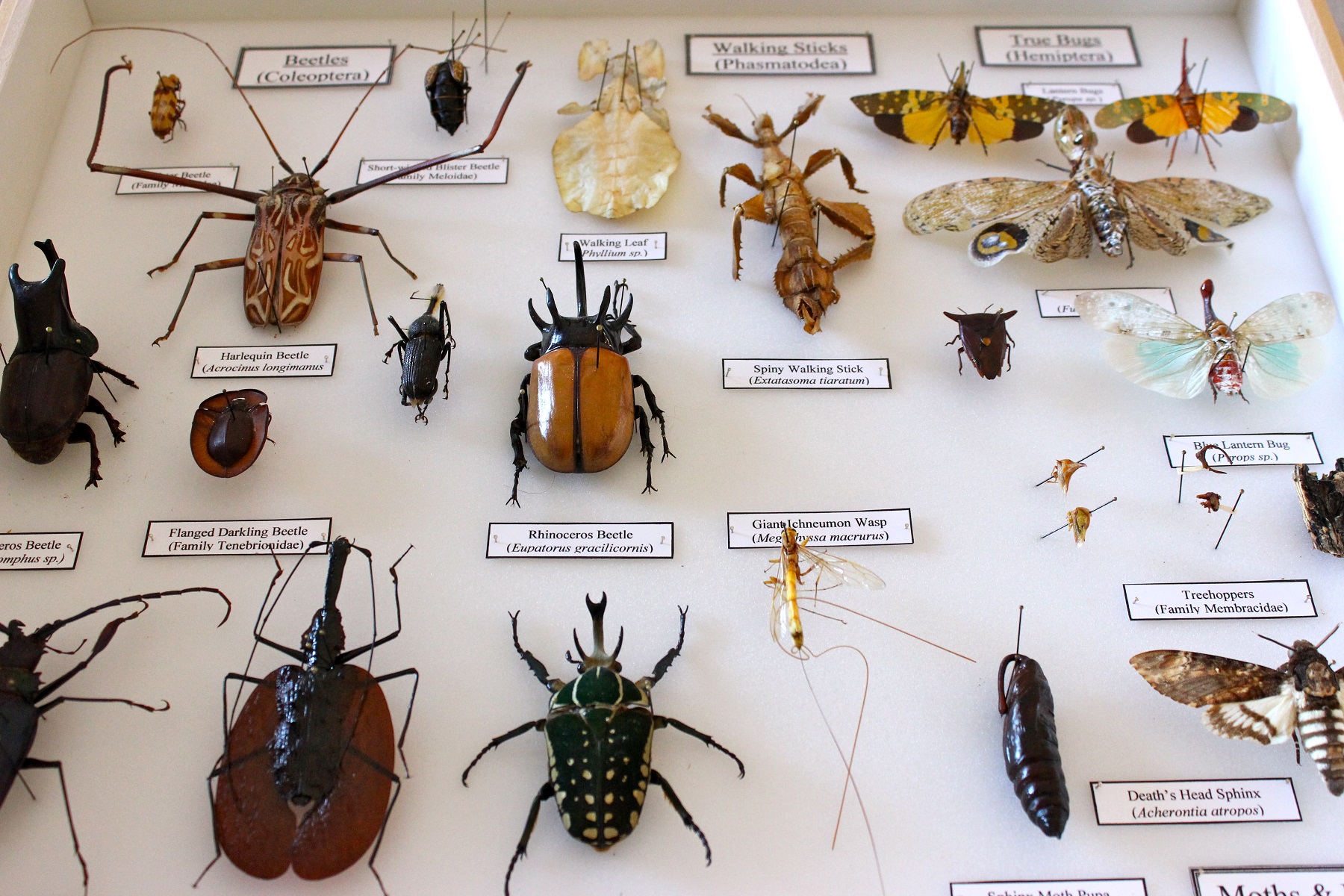Ten reasons for collecting and preserving insect specimens
There is an increasing trend to discourage collection and preservation of biological organisms including insects and their relatives. Although insects can be studied and enjoyed without killing them using observation and photographic methods, there are a number of reasons or benefits from procuring specimens:
1. Identification of insects is a specialty within the study of insects (entomology) based on studies by taxonomists that describe species or groups of species (e.g., families, orders, genera, etc.). Through collection and preservation efforts, new species are found and described. Many undescribed insects remain in the world, even in Texas.
2. Properly preserved and stored insect specimens can be enjoyed and studied for hundreds of years while most insects live only for a period of days to months before they die and decompose. Specimens in museums, along with the data provided on the specimen labels constitute an historic record of biological diversity and can be used to document changes in distribution and abundance of species over time. Some museums contain specimens of now-extinct insect species.
3. Names and identities of insects (and other organisms) change over time when new studies reveal the need for a name change. If specimens were used as the basis for a scientific study on, voucher specimens are submitted and stored in a recognized, reputable insect collection. Only then can researchers in the future double check to make sure the species cited in these studies were accurately identified. In some cases, specimens that looked identical to early researchers are later found to actually represent two or more species through further study or use of new techniques.
4. Insects are the most common form of wildlife encountered by people and are excellent models of living systems useful in learning about several fields of science. Most species are common and abundant and are not threatened by casual collection activities. Close observation of preserved specimens can result in an understanding of form and function of bodies (morphology and behavior), relationships between organisms or groups of organisms (systematics and evolution), methods of identifying organisms (taxonomy), and life cycles (developmental biology).
5. During the exercise of collecting insects, collectors learn about relationships between insects and their environment, the importance of habitat, keys to species survival, and the relationships between species groups such as hosts, predators and parasites, i.e., trophic levels. Closer inspection of predaceous insects, for instance, reveal adaptive features enabling those species or groups or species to capture prey or what features allow a walkingstick to mimic a twig.
6. The study of insects in collections provides knowledge that can lead to a better understanding and higher tolerance of this group of animals in our environment. Ignorance about insects and their relatives can lead to an irrational fear of insects, called entomophobia (fear of spiders is arachnaphobia), or even psychological problems such as imagining that your body is infested with insects (delusionary parasitosis). Inability to determine beneficial insects (pollinators, predators, parasites) from pest insects can lead to unnecessary pesticide (insecticide) use.
7. Insects and their relatives are fascinating creatures so unlike ourselves. Yet they share many features with humans and other animals. People of all ages can participate in the study of insects and making an insect collection is an activity to be shared with others, providing enjoyment and exercise while being educational.
8. Many insect specimens are simply beautiful to the eye. Butterfly wings have been called “nature’s canvas.” Other insects are ugly and horrifying to look at. When mounted and displayed properly, insect specimens or insect parts can become an art form similar to taxidermists that display stuffed animals or artists using paint to make a picture.
9. Insect specimens make great souvenirs. Assuming laws and regulations pertaining to the collection and transport of biological specimens are honored, specimens collected on vacation trips can make useful reminders of these trips to far-away places. Properly maintained, the specimens can last more than a person’s lifetime. But please make sure you do not collect insect in the wild, if you are willing to collect some on your holiday, make sure you gather them from ethical farms and the animals are not taken from the wild.
10. In general there is only 1 important rule when collecting insects: Make sure you do not collect them from their natural environment but do it on an ethical manner so you do not harm natural habitats, because stealing insects from their natural environment can have a huge impact on the local habitat! Connect with ethical farms or educations expeditions, leave the environment as it is!


